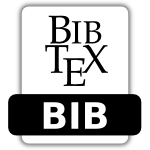Improving Musical Expressiveness by Time-Varying Brightness Shaping


Authors: Barthet M., Kronland-Martinet R., Ystad S.
Publication Date: September 2007 (Computer music modeling and retrieval: sense of sounds, Springer Berlin / Heidelberg, pp.313-336, 2008, Lecture Notes in Computer Science)
Tags: Musical Interpretation
Presented at international symposium on Computer Music Modeling and Retrieval (CMMR 2007),
Sound examples
Sound examples 1: Effects of the mouth pressure on clarinet timbre
Sound 1 : series of synthesized clarinet tones corresponding to increasing values of the mouth pressure and fixed reed aperture.
The brightness and loudness of the tones increase as the mouth pressure increases.
Sound examples 2: Effects of the embouchure on clarinet timbre
Sound 2a : “normal” timbre (classical mouthpiece configuration)
Sound 2b : “narrower” timbre (obtained by taking much less mouthpiece)
Sound 2c : “twisted” timbre (obtained by taking too much mouthpiece)
Sound examples 3: Relation between timbre and sound level
Sound 3 : clarinet crescendo performed by trying to keep a stable timbre
Sound examples 4: Timbre Material / Timbre Temporal Shape
Sound 4a : original clarinet tone
Sound 4b : resynthesized tone with a fixed Spectral Centroid value (corresponding to the onset of the original tone)
Sound 4c : resynthesized tone with a fixed Spectral Centroid value (corresponding to the offset of the original tone)
Sound examples 5: Time-varying brightness shaping
Bach’s Suite II excerpt (Allemande)
Sound 5a : expressive clarinet performance (Clh1)
Sound 5b : piccolo flute sampler-based performance (Pic0)
Sound 5c : piccolo flute performance after the time-varying brightness shaping (Pic1)
Sound examples 6: Reversing the tones’ brightness variations
Sound 6a : sampler-based clarinet performance with expressive brightness variations
Sound 6b : sampler-based clarinet performance with reversed brightness variations

